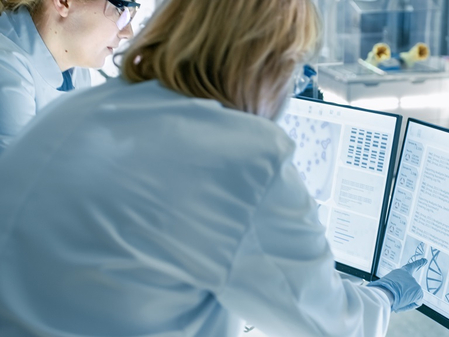The University of Aberdeen has contributed to changing the course of medical imaging by designing and building the very first whole-body clinical MRI (Magnetic Resonance Imaging) scanner. From that time on, clinical MRI would prove to offer formidable diagnostic value and, along with other non-invasive imaging modalities, would create the era of modern image-based diagnostics.
Aberdeen's pioneering effort in medical imaging technologies did not stop with MRI, but further expanded to other modalities, notably in the development and promotion of nuclear medicine imaging techniques (SPECT and PET).
Building on this legacy, the IMS Theme 'Medical Imaging Technologies' (MIT) aims to explore new territories and advance medical imaging by leveraging existing expertise in MRI technologies (field cycling, low-field, functional and cardiac MRI) and PET tracers, as well as pushing towards multi-modality approaches and new image processing techniques.
The IMS MIT Theme currently includes six research groups working at the interface between Medicine, Science and Engineering. We are located on the Foresterhill Health Campus and work in synergy with the various institutes within the School of Medicine, Medical Sciences and Nutrition and NHS Grampian . All research groups are members of the Aberdeen Biomedical Imaging Centre ( ABIC ) that helps foster cross-school translational research and teaching with MSc programmes in Medical Imaging and Medical Physics . In parallel, some of the MIT research groups with complementary expertise in NMR/MRI physics join forces in the Center for Adaptable MRI Technology (AMT Center) to develop advanced MR systems and methods. With the transdisciplinary expertise within our Theme, we aim to push the boundaries of technical advancement in medical imaging.
The IMS MIT research groups have not only access to conventional imaging modalities, including a Philips 3T research MRI and a GE PET/CT scanner , but also custom and unique platforms dedicated to Fast Field Cycling (FFC-NMR and Field Cycling Imaging, FCI) and MRI at ultra-low magnetic field strengths (ULF-MRI). The synergetic effort of FCI and ULF-MRI aims at pushing the boundaries of MRI technology to develop the next generation of scanners.
- FCI: Unlike conventional MRI where the static magnetic field (B0) is held constant, in FCI the field is deliberately varied during the imaging sequence. This allows parameters such as the spin-lattice relaxation time, T1, to be studied as a function of B0. This "T1 dispersion" has demonstrated strong potential as a novel form of MRI contrast, and could find application in the diagnosis and characterisation of a wide range of pathologies. FCI opens access to a new domain of medical research that remains to be explored.
- ULF: MRI is very expensive and not widely available (more than half of the world population does not have access to MRI diagnosis and when available its use is restricted to Radiology departments). One way to MRI access is to lower the magnetic field strength of the MRI system, but at the cost of an intrinsic lower signal-to-noise ratio (SNR) per unit time. Yet, by leveraging fast acquisition strategies, innovative detection hardware, and advanced reconstructions schemes, clinically relevant and quantitative imaging can be obtained at magnetic fields ≤0.1 T.
Researchers in the Medical Imaging Technologies Theme are convinced that the future of medical imaging lies in multimodal, transdisciplinary approaches. The contemporary successors of the «small team of half-mad scientists » pursue the Aberdeen's pioneering effort to develop disruptive tools and methods that bring medical imaging always closer to the patient.
People
Dr Lionel Broche develops a new medical imaging technology, Field Cycling Imaging (FCI), which derives from MRI and informs on the motion of molecules inside the body, without contact. Lionel is developing the technology and works with clinicians to find out how FCI signals can answer critical needs in healthcare.
Dr Sergio Dall'Angelo uses a combination of organic, peptide, fluorine and radio chemistry to develop novel diagnostics and therapeutics agents and to tackle biological problems. In particular, we are interested in the development of molecular probes labelled with fluorine-18 and gallium-68 for Positron Emission Tomography (PET).
Dr James Ross develops new MRI strategies for Field-Cycling Imaging aimed at reducing scan time without sacrificing diagnostic utility. He is also interested in exploring how cardiac 31P and 1H magnetic resonance spectroscopy can be used to improve our understanding of cardiovascular disease.
Dr Najat Salameh develops new tools and methods for MRI and in particular low-field MRI, with long-term aim to make the technology more accessible to all and to all body parts. Her research focuses on healthy and pathological organ biomechanics, function, and metabolism, as well as interventional imaging.
Dr Mathieu Sarracanie contributed to rejuvenate low-field MRI by combining high-performance pulse sequences with modern computing resources and innovative hardware solutions to foster accessible screening and diagnosis. He develops imaging methods and instrumentation for quantitative and fast low-field MRI with current interests in cardiovascular diseases, neuroscience, and cancer.
Dr Gordon Waiter is interested in the measurement and mechanisms of brain plasticity and cognition with a focus on age-related cognitive decline and dementia and in particular the role of inflammation, both chronic and acute, and immunosenescence in brain ageing.



